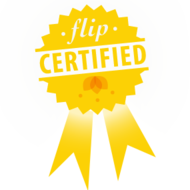The fact that Jefferson still sought to find a Northwest Passage shows how little was known of the new territory. To explore the journey further, we watched National Geographic's production of Lewis & Clark: Great Journey West in class. In the film, we know that there were several goals of the expedition, but among them were to build friendly relations with Native Americans while also formally annexing their lands, but also documenting and mapping what they see and collecting artifacts of the people, animals and natural environment. According to this historical blog, many of these artifacts were dispersed and lost over time.
For our project, students used information from the text, the video and their own research to create their own "artifacts" that may have been lost. For example, it is known that Lewis and Clark spent a significant amount of time with the Mandan people of the Plains and brought back a buffalo hide depicting a battle scene. Several groups created buffalo hides depicting other scenes from the expedition using paper grocery bags. Others created journals with tales from the expedition and included leaves and bone fragments of species previously unknown.
I like this project for a few reasons:
- The students really enjoy any opportunity to use art and creativity. There are countless benefits to using technology in the classroom, but they really appreciate times when we power down the laptops and create something with just our hands and some art supplies.
- Creating these artifacts made students step back and think about how historical narratives like the textbook are created based on artifacts and other primary sources.
- Looking at the artifacts also forced students to reflect on the ways that our knowledge of our world was built. Only recently have we been able to map and observe our world with satellites, sonar and similar technologies. For most of human history, our collective knowledge of the world came from on-the-ground human exploration and experience.
For the project, students were allowed to create journals, samples, maps and other types of artifact evidence from the trip. They looked at online catalogs of real artifacts and watched a film that reenacted the journey to collect information, then began creating.
They made Mandan buffalo hides depicting famous battles and encounters, journals with leaf samples of real species from the west, as well as recreations of antique maps that showed the journey.
I found this project to be relatively flexible as far as timing and ability levels. Some students got really creative and researched more information about what Lewis and Clark actually collected. Others stayed very concrete and created maps or wrote journal entries. It was also fairly simple to adapt the requirements in order to accommodate shorter time periods as needed.









0 comments:
Post a Comment